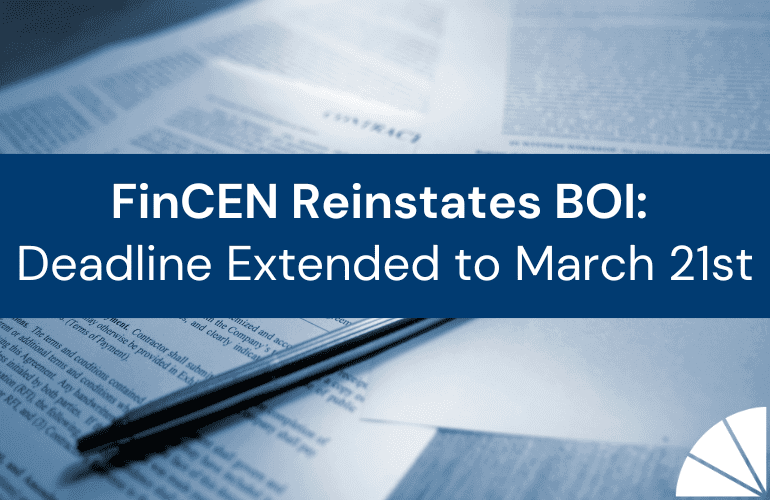
When you own a business, you’re no stranger to hard work, and you know the value of a well-orchestrated strategic plan. Your blood, sweat, and tears went into your business, and your strategic efforts have ensured its success. Despite your commitment over the years, the time to exit your business will inevitably come. And adding exit planning into your strategy now can help you ensure a comfortable retirement and your business’s continued success.
In part six of LGA’s Best Practices Series, I’m sharing five exit planning best practices for business owners positioning their business for a sale or transfer.
#1 Start Planning Early
Plotting out exit planning specifics is often more time-consuming and complex than business owners think. From initial planning to execution, the timeline for a successful business exit averages anywhere from three to ten years.
Despite a demonstrated need for early planning, The Exit Planning Institute’s State of Owner Readiness Survey found that 80% of business owners surveyed reported they did not have a documented exit plan, and 50% of respondents admitted they had done no exit planning at all.
Some business owners spend the better part of their lives at the helm, building strong customer relationships and overseeing the business’s finances. It can be challenging to loosen the reins and shift responsibilities such as these to your successors. But you have to learn the art of letting go. Whether you choose to upskill in-house employees, bring in new talent, or teach your heirs the lay of the land, your successors will need time to learn the ropes.
#2 Align Personal & Business Objectives
Exit planning encompasses retirement, estate, and tax planning, as well as business succession planning. That’s a great deal to consider, but business owners can start by assessing their post-retirement lifestyle and financial needs.
How do you plan to cover your expenses once you leave the business? Let’s say you plan to retire in five years. Do you know what your monthly expenses will be? Have you considered annual costs like property taxes or tax on interest income? What about surprise expenses like medical bills and auto repairs? Do you plan to travel? You can begin building your exit plan based on your needs.
#3 Set Specific Goals
According to the Business Enterprise Institute (BEI), the most common obstacle for business owners planning their exit is their own reluctance to set specific goals. Most business owners have vague ideas in mind. For example, “I want to sell my business in the next ten years,” or “I want my children to take over the business in five years.” But they haven’t considered the nitty-gritty details.
For example, if you plan to rely on the proceeds from a third-party sale of your business to cover your expenses, you will want to ensure you fetch the highest possible price. To do so, you’ll need to set specific, achievable goals to increase the value of your business ahead of the sale. One of the most effective value drivers is maintaining a well-oiled management team throughout and even after the sale of the business. So setting a goal to establish a key employee incentive plan can be a valuable tool in this arena.
#4 Have a Contingency Plan
Even with an exit plan in place, it’s best practice to have a contingency plan. What happens if a third-party buyer backs out or your key employees decide against the deal at the last minute? And family transfers can be complicated, especially if there are multiple children to consider or the business has been handed down across several generations. There’s a saying in family business: “The first generation builds the business, the second makes it a success, and the third wrecks it.” While this is, no doubt, an overgeneralization, there’s always a possibility that your children may not be cut out to run a business, or they may not be as interested in running the business as you had hoped.
If you plan to transfer ownership to key employees or family, you may find they lack the capital to purchase the business outright. If so, you may consider alternative options like financing an installment note. In this case, you would receive regular payments over a specified timeline. However, the new owner’s ability to repay the installment note in full is contingent on the business’s doors remaining open during the specified timeframe for repayment, so your exit plan still needs to include goals that will increase the value of the business ahead of your exit.
#5 Quantify Your Resources
Whether you plan to sell your business to a third party or transfer ownership to key employees or family, you will need to obtain a business valuation to determine the fair market value of your business. Business valuations also provide business owners with a baseline for setting their exit planning goals. For example, to ensure the proceeds of the sale of your business will be adequate to cover your retirement needs, you have to know how much your business is worth.
Not all business valuations are created equal. At LGA, we align our multidisciplinary experience to provide comprehensive exit planning, business valuation, advisory, and CPA services. We work with business owners to develop, implement, and execute strategies that best meet their personal and business needs.
As a Certified Valuation Analyst (CVA), I can also help uncover in-depth knowledge on specific assets and creditor-owned liabilities, as well as other insights that can help you implement the right strategies to increase your company’s value. I want to help you leverage your business’s value to structure and support a successful exit plan. Contact me today to learn more.
If you missed them, check out the previous articles in LGA’s Best Practices Series:
- Part I: Standard Operating Procedures & Adapting to New Environments
- Part II: Succession Planning for Key Members of Your Finance & Executive Teams
- Part III: Capital Structure – Why Your Business’s Debt & Equity Blend Matters
- Part IV: Key Employee Incentive Planning
- Part V: Employee Incentive Arrangements & Business Valuations
by Frank Storniolo, CPA, CVA, MST
 Frank is a Partner at LGA and the head of the Business Consulting and Valuations group. He provides business valuation services to companies whose needs arise from business growth or disputes, M&A or shareholder transitions, trust and estate matters, or divorce. Clients also call on Frank to support their business growth through advisory services such as budgeting & forecasting, benchmarking & KPIs, and tax consulting & compliance. His diverse experience includes advising privately-held businesses and their owners in an array of industries.
Frank is a Partner at LGA and the head of the Business Consulting and Valuations group. He provides business valuation services to companies whose needs arise from business growth or disputes, M&A or shareholder transitions, trust and estate matters, or divorce. Clients also call on Frank to support their business growth through advisory services such as budgeting & forecasting, benchmarking & KPIs, and tax consulting & compliance. His diverse experience includes advising privately-held businesses and their owners in an array of industries.





